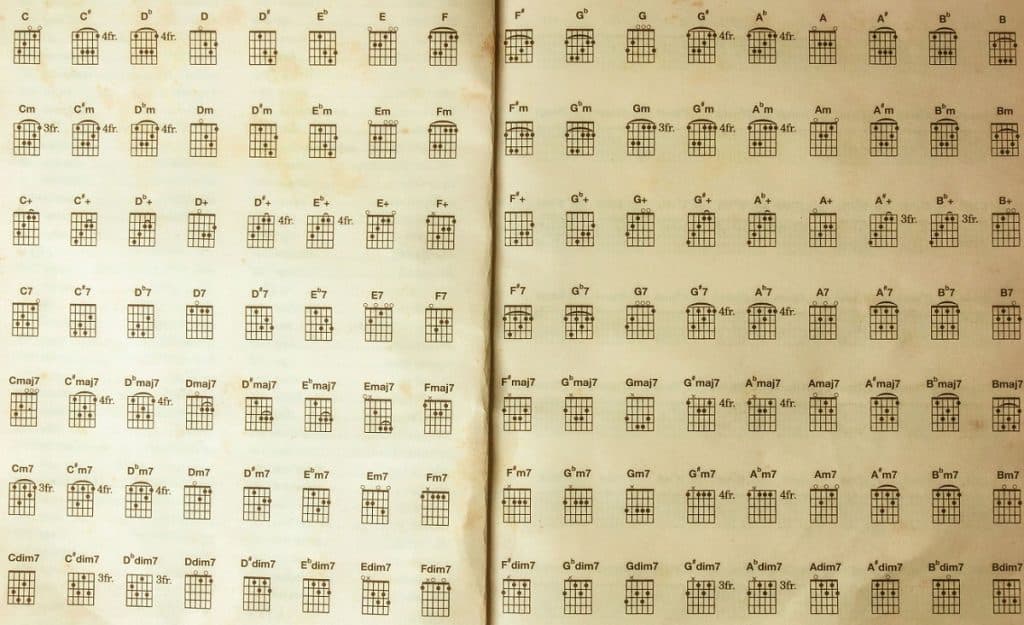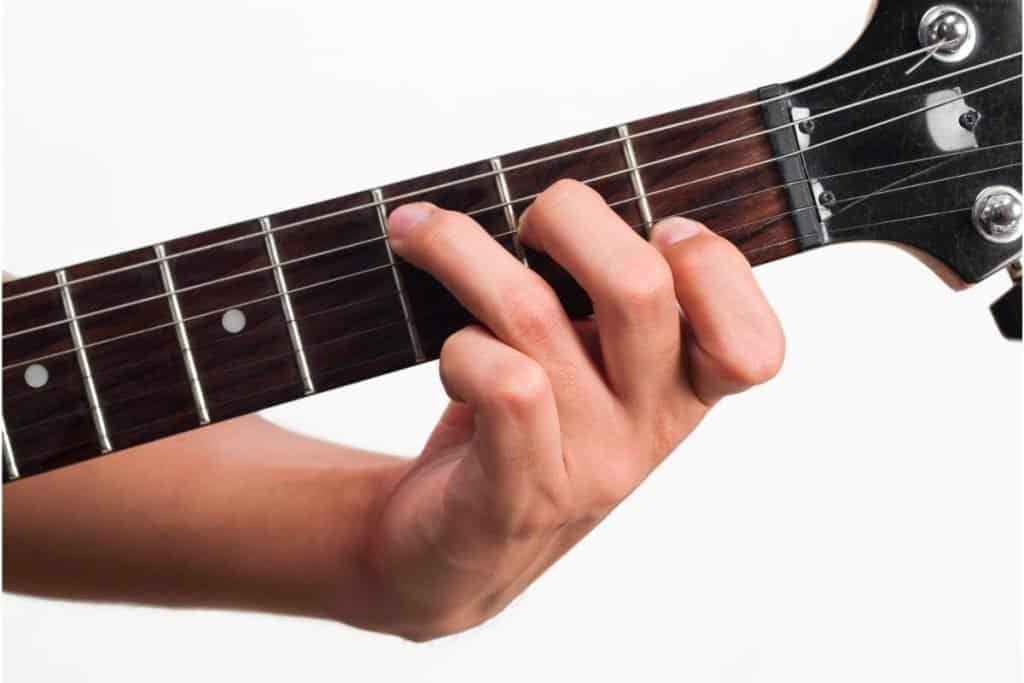Knowing the chords on the guitar is the first step when any young musician starts to learn to play the guitar. The chords are formed in the guitar frets and you might be wondering, how many guitar chords are there in a standard guitar with 20 frets?

On a basic level, there are 8 guitar chord types on a guitar and each of these has 12 different chords which correspond with different musical notes. A lot of people start to learn the guitar with the most basic chords on note C.
In this article, we look at chords and chord types in more detail to introduce you to guitar chords and tell you how many chords there are on the guitar.
The Eight Major Chord Types
There are eight chord types on a guitar with 12 chords attached and this represents the final number of musical notes. Most beginners start with a C-chord which is rooted in the note of C.
The major chord types are:
- A Major
- Bb Major
- B Major
- C Major
- C# Major
- D Major
- Eb Major
- E Major
The 12 basic chords on a guitar are:
- A
- Bb
- B
- C
- C#
- D
- Eb
- E
- F
- F#
- G
- G#
There are other chords on a guitar, but these are the basic ones that beginners should learn first. Other chords do not follow the basic rules or concepts when it comes to creating guitar chords.
Basic Guitar Chords
Although we have outlined the eight chord types, the easiest chords to learn at first are C major, A major, G major, E major, and D major.
These chords do not require too much effort and they only require small adjustments should you need to play the minor version.
The most commonly used chords are C, G, and D and these are the most commonly used chords in pop songs. They are also the easiest to learn.
8 Essential Guitar Chords
Although we have covered the most common chords, the eight most essential chords you need to learn are:
C Major
This is the first guitar chord you will learn and the fingering is pretty easy. You do not have to forcefully use your fingers to find the correct fretting.
A Major
You might need a little more practice for this chord, as all three fingers must be in one fret.
A Minor
This is simple once you master A Major. You need to move your fretting fingers on the second fret and bring your left index finger down to the second string on the first fret. Move your middle finger to the fourth string and your left ring finger to the third.
D Major
This is another easy chord that requires you to fret the last three guitar strings with just two fingers. The other three strings are left open.
D Minor
For this chord, you need to move your left index finger to the first fret on the first guitar string and pop your middle finger where the index was on the second fret of the third guitar string. Your ring finger needs to be on the second string, the third fret.
G Major
Although a major chord, this is tricky to master as you need four fingers. After years of practice, this can be reduced to three fingers to produce the same sound.
E Major
All you need is three fingers and three stings to produce an E major chores and the rest of the strings are left open.
E Minor
E minor is easier than E major and all you have to do is fret E major, before removing one finger. This means you only need two fingers to produce the chord.
Major And Minor Chords

The main difference between these chords is that major chords sound ‘happy’ whereas minor chords sound a lot more ‘sad’.
Major chords are also easier to learn and examples include C, G, F, E, B, A, and D. A major chord can be the one-note followed by the major third and perfect fifth.
The difference between a minor chord is that instead of a major third for the third note, they have a minor third but still have a perfect fifth.
E minor, A minor, and D minor are popular minor chords, and to make a major a minor, you find the third note and move it down a fret.
Dominant 7th Chords
These chords are a major triad chord but one that also has a minor seventh. You have the root, major third, perfect fifth, and followed by the minor seventh. The chords resolve to the original chord and it is an accented chord added to embellish music.
Major 7th Chords
Major 7th chords are made of four notes but the chord might be made with six notes and duplicates. The chord has a root, a major third, a fifth, and a major seventh and it is usually easier to produce a major 7th chores over the original.
Minor 7th Chords
You will only need the 1st, 3rd flat, 5th, and 7th flat on the scale to produce a minor 7th. For example, you will either have C, E, A, or G and then an A minor 7 or an AM7 chord based on the scale of A major.
Final Thoughts
We hope you have enjoyed this article on the many different types of guitar chords and understand the difference between a major and minor chord, as well as how to produce the eight most essential chords as a beginner.
Once you have mastered these chords, you can continue to learn about the other advanced chords to improve your playing and widen your abilities.
Although certain chords may seem difficult at first, with plenty of practice, you should get the hang of it in no time.
References
Recent Posts
QuickTime is a vital app for many Mac users, and if you’ve recently bought a new microphone, you might wonder how to use it optimally. QuickTime cannot record audio content if it doesn’t have...
Every microphone leaves a unique signature on the quality of its output. If you’re a podcaster trying to melt your way into your audience’s hearts, a muddy, distorted recording won’t cut it....
